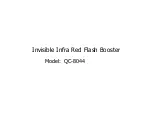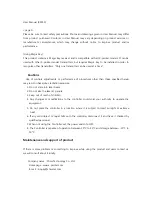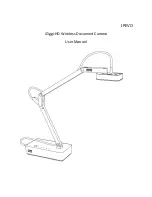
SBIG STC-428-OEM CAMERA
USER’S MANUAL
21
3 - Image Calibration
Image calibration, also known as image reduction or pre-processing, applies
corrections for tiny defects and variations in the camera sensor and optical
system. Proper image calibration is of the utmost importance in producing the
highest-quality images possible.
No electronic imaging device is perfect. Each sensor has a unique response in
the following three areas:
•
Bias level
•
Dark current
•
Raw sensitivity to light levels
These effects vary from sensor to sensor, and they also vary from pixel to pixel
within the same sensor. Each response affects the intensity represented in
every pixel of the image in a specific way. The combined effect of these pixel
variations may be relatively small on brightly-lit images, but under low-light
conditions, they can become extremely important.
The majority of the problems caused by these variations can be readily
removed by calibrating the raw image. Performing basic image calibrations can
provide a huge improvement in the signal-to-noise ratio, resulting in much
greater sensitivity. Normalizing these variations also provides a truer
representation of the subject in the working image. This provides the best
possible basis for any subsequent image processing.
The basic calibration steps are termed Bias, Dark, and Flat-Field calibration.
These are detailed below. A general workflow is then provided for image
calibration and the subsequent combining of multiple light frames, if required.
Bias is inherently included in all flat-field and dark-field images. For CCD
sensors, there is sometimes a benefit to performing bias frame calibration
separately. CMOS imaging sensors work quite differently, and cameras that
include features such as StackPro
TM
affect the bias level. For that reason, we
do not recommend using separate Bias frame calibration for CMOS sensors
such as those in the STC-428-OEM.
Please note that calibration images must be taken using the same
Readout
Mode
as the images you intend to calibrate. Otherwise the calibration will not
be performed correctly.
Refer to the online Help file for further information and more detailed
procedures, as required.
















































